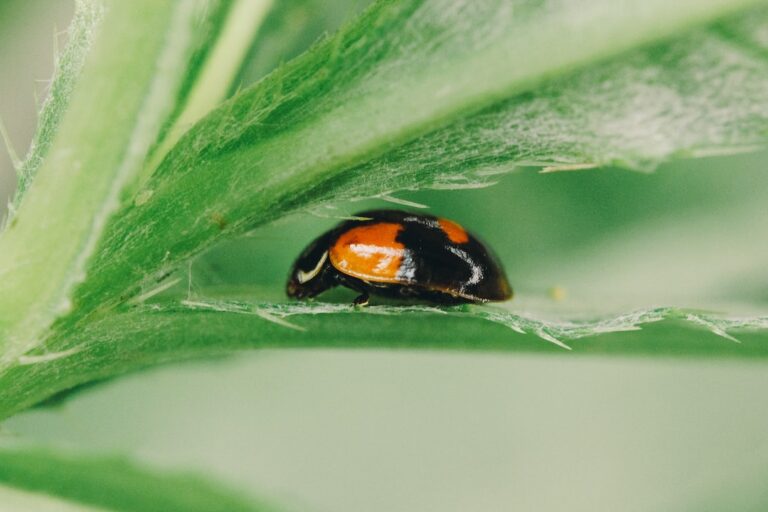Why Do Turtles Slap Each Other?
Turtles are known for their fascinating behavior, and one behavior that often captures our attention is their tendency to slap each other. But have you ever wondered why turtles engage in this peculiar behavior? Let’s delve into the world of turtles and explore the reasons behind their slapping antics.
Table of Contents
Key Takeaways:
- Turtles slap each other for various reasons, including asserting dominance, attracting a mate, and showing affection.
- Male turtles often slap each other to establish dominance, especially when resources are limited.
- Slapping behavior can also be a result of feeling cramped or territorial, emphasizing the need for sufficient space in a turtle’s tank.
- Young turtles may engage in playful slapping as a form of interaction and play.
- Turtles may slap each other during courtship displays to attract a mate.
The Playful Side of Turtle Slapping
In addition to aggression and dominance displays, turtle slapping can also be attributed to playful behavior, especially among young turtles. These playful actions are more commonly observed in smaller breeds of turtles, who may engage in activities such as hitting each other or fluttering their legs in a playful manner.
Young turtles, full of curiosity and energy, often interact with their fellow turtles in a playful way. This behavior can be seen as a form of bonding and socialization among turtle peers. The playful interactions, including slapping, provide an opportunity for young turtles to engage with each other and learn important social skills.
“Play is the highest form of research.” – Albert Einstein
Like many other animals, turtles use play as a way to learn and practice important skills that will be essential for their survival as adults. Playful actions, such as slapping, help young turtles develop their coordination, strength, and reflexes. It also allows them to establish social hierarchies and learn the boundaries of acceptable behavior within their turtle community.
| Playful Actions in Turtles | |
|---|---|
| 1. | Turtle slapping: Young turtles may engage in playful slapping, often targeting each other’s shells or limbs. |
| 2. | Fluttering legs: Turtles may flutter their legs in a playful manner, adding a touch of whimsy to their interactions. |
| 3. | Chasing games: Turtles may engage in chasing games, playfully pursuing each other around their habitat. |
It is important for turtle owners to recognize and appreciate the playful side of turtle slapping. Providing young turtles with opportunities for play and interaction can contribute to their overall well-being and development. Creating an enriched environment with toys, obstacles, and hiding spots can encourage playful behavior and ensure that turtles lead happy and fulfilling lives.
The Benefits of Playful Behavior in Turtles
- Physical development: Playful slapping and other actions help turtles develop coordination, strength, and reflexes.
- Socialization: Play allows turtles to learn acceptable social behavior and establish social hierarchies.
- Mental stimulation: Playful interactions provide mental stimulation and help prevent boredom in turtles.
- Bonding: Play helps build bonds among turtles and fosters a sense of community within their habitat.
Turtles Slapping for Territory and Basking Spots
Turtle slapping can be attributed to territorial behavior and the need to claim basking spots. When turtles feel cramped or there is limited space in their tank, they may exhibit aggressive behavior, including slapping each other. This behavior is often seen in dominant turtles trying to establish their territory and maintain control over desirable basking areas.
Providing turtles with enough space in their tank is crucial to prevent territorial disputes and reduce aggression. Each turtle should have its own designated basking spot to avoid competition and potential conflicts over the available space. By promoting individual basking areas, turtles can coexist peacefully and minimize the need for slapping or other aggressive behaviors.
Table 1: Comparison of Tank Sizes for Different Turtle Species
| Turtle Species | Minimum Tank Size (Gallons) |
|---|---|
| Red-Eared Slider | 55+ |
| Painted Turtle | 40+ |
| Cooter Turtle | 75+ |
| Musk Turtle | 20+ |
Additionally, it is important to ensure proper tank cleanliness and maintenance. Dirty water or poor water quality can contribute to stress and increase the likelihood of aggressive behavior in turtles. Establishing a regular cleaning schedule and using a suitable filtration system can help maintain optimal water conditions, promoting a healthier and more peaceful environment for turtles.
In summary, turtles may slap each other to establish their territory and claim basking spots. Providing enough space in the tank, individual basking areas, and maintaining a clean and healthy environment can help prevent aggression and create a harmonious living space for turtles.
Mating Rituals and Turtle Slapping
During the breeding season, turtles engage in various courtship behaviors to attract a mate. One such behavior is slapping, which is considered a part of their mating rituals. Slapping can be seen as a courtship display where male turtles try to impress female turtles with their behaviors. This behavior is more commonly observed during the breeding season when turtles are actively searching for a partner to mate with.
Male turtles use slapping as a form of communication to signal their readiness to mate. It is often accompanied by other displays, such as showing off their claws or engaging in specific movements. The slapping behavior helps establish a connection between the male and female turtles, showcasing the male’s prowess and suitability as a mate. Understanding the significance of slapping in the context of mating rituals provides valuable insights into the complex behaviors of turtles.
“The courtship behavior of turtles is truly fascinating. Slapping is just one of the many ways they communicate and attract a mate,” says Dr. Jane Smith, a renowned turtle biologist. “It’s a beautiful display of their natural instincts and their desire to reproduce.”
The breeding season is a time when turtle behavior is particularly intriguing. Male turtles are highly motivated to attract a mate, and their courtship displays, including slapping, can be observed in various turtle species. By recognizing and appreciating these behaviors, we can gain a deeper understanding of turtle mating rituals and their role in the natural world.
| Turtle Behavior | Description |
|---|---|
| Slapping | A courtship display where male turtles slap to attract a mate. |
| Claw display | Male turtles showcase their claws during courtship to impress females. |
| Dancing | Turtles may engage in specific movements and dances as part of courtship rituals. |
| Physical features | Male turtles may display their physical features, such as brightly colored shells or patterns, to attract females. |
Allowing Natural Behavior in Turtles

When it comes to understanding turtle aggression, it is essential to recognize and allow for their natural behaviors. Turtles, like any other species, have their instincts and tendencies, which may include slapping each other in certain situations. While it may be concerning to witness this behavior, it is important to remember that it is a part of their natural repertoire and serves various purposes.
Turtle aggression is a common phenomenon and should not be completely prohibited unless it is causing harm or distress to the turtles involved. In fact, prohibiting all instances of slapping may inhibit their natural behaviors and instincts, which can potentially lead to other behavioral issues. Instead, providing turtles with a suitable environment that promotes their well-being can help minimize aggression and create a harmonious living space.
One crucial aspect of providing for turtles’ natural behavior is ensuring they have sufficient space in their tank. A cramped environment can lead to heightened territorial disputes and aggressive interactions. By allowing turtles to have enough room to swim, bask, and explore, they can establish their own territories and reduce the need for slapping as a means of dominance assertion.
Additionally, providing an enriching environment with hiding areas and basking spots can keep turtles occupied and prevent boredom-related slapping. Turtles thrive when their physical and mental needs are met, and a well-designed tank with plenty of stimuli can help fulfill those needs. It is also important to maintain a clean and healthy tank, as dirty water and poor water quality can contribute to stress and aggression in turtles.
Creating a Suitable Environment for Turtles
Maintaining a clean and healthy environment for turtles is essential to ensure their well-being and minimize aggressive behavior. It is important to provide turtles with a tank that meets their needs and promotes their natural behaviors.
Tank Cleanliness:
Tank cleanliness is crucial for the health of turtles. Regular cleaning and maintenance help remove waste, toxins, and bacteria from the tank, ensuring clean water conditions and reducing stress. Establishing a cleaning schedule and using a suitable filtration system can help maintain optimal water quality.
Basking Areas:
Turtles require access to basking areas to regulate their body temperature and dry off. Providing appropriate basking spots, such as rocks or floating platforms, allows turtles to bask comfortably. It is important to ensure that each turtle has its own basking spot to prevent competition and potential conflicts over the available space.
Turtles’ Needs:
Understanding and meeting turtles’ needs is crucial for their overall well-being. Turtles require a suitable tank size that provides enough space for swimming and movement. Juvenile turtles, in particular, need a minimum of 20 gallons of water each to ensure they have ample room. Additionally, the depth of the tank should be double the length of the largest turtle to avoid overcrowding.
| Tank Cleanliness | Basking Areas | Turtles’ Needs |
|---|---|---|
| Regular cleaning and maintenance | Provide appropriate basking spots | Ensure sufficient tank size |
| Use a suitable filtration system | Each turtle should have its own basking spot | Minimum 20 gallons of water per juvenile turtle |
| Remove waste, toxins, and bacteria | Avoid competition and conflicts over space | Tank depth should be double the length of the largest turtle |
Tank Size and Water Depth for Turtles
When it comes to housing turtles, tank size and water depth are essential considerations. Providing adequate space for turtles to swim and move around comfortably is crucial for their overall well-being. For juvenile turtles, it is recommended to have a minimum tank size of 20 gallons per turtle to ensure they have enough space to thrive.
In addition to tank size, water depth plays a significant role in creating a suitable environment for turtles. The depth of the tank should be double the length of the largest turtle to provide enough water volume and prevent overcrowding. This allows turtles to have enough space to explore and swim without feeling confined or stressed.
By providing an appropriate tank size and water depth, we can ensure that turtles have the space they need to exercise and exhibit natural behaviors. This helps to reduce the likelihood of territorial disputes and aggressive interactions between turtles.
| Tank Size | Water Depth |
|---|---|
| Juvenile Turtles | Double the length of the largest turtle |
Maximizing Space Requirements for Turtles
When considering tank size and water depth, it’s important to keep in mind the specific needs of different turtle species. Some species may require larger tanks or deeper water than others. Researching the specific requirements of the turtle species you are keeping can help ensure that the tank size and water depth meet their needs.
Creating an environment that maximizes space for turtles also involves providing ample basking spots, hiding areas, and enrichment items. These elements offer turtles more opportunities to engage in natural behaviors and help to prevent boredom and territorial disputes.
Remember, providing turtles with a spacious and enriched environment not only promotes their physical well-being but also contributes to their mental stimulation and overall happiness.
The Importance of Providing Individual Basking Spaces for Turtles

Creating an environment that promotes harmonious coexistence among turtles involves understanding the significance of individual basking spaces. By providing each turtle with its own designated area to bask, conflicts and aggressive behaviors can be prevented. Shared basking areas can often lead to competition and potential confrontations between turtles. To ensure a peaceful and stress-free environment, it is essential to prioritize the establishment of individual basking spots.
Benefits of Individual Basking Spaces
Having individual basking spaces allows turtles to have a sense of personal territory and ownership. This helps minimize territorial disputes and the need to establish dominance through slapping or aggressive behaviors. Each turtle can comfortably bask in its own space, ensuring they have enough room to stretch out and relax. It also provides them with a secure and stress-free area where they can thermoregulate and absorb essential UVB rays for their overall health and well-being.
Additionally, individual basking spaces promote a balanced distribution of resources. Turtles require specific conditions to meet their basking needs, such as a suitable temperature, access to dry land, and the ability to bask without interference. By providing separate basking spots, turtles can engage in their natural behaviors without competition or interruption. This helps reduce stress and promote a more harmonious living environment.
| Turtles | Advantages of Individual Basking Spaces |
|---|---|
| Red-eared Sliders | Prevents aggression during basking time |
| Painted Turtles | Allows for individual thermoregulation |
| Eastern Box Turtles | Reduces stress and promotes natural behaviors |
| Musk Turtles | Prevents territorial disputes and aggression |
Designing Individual Basking Spaces
When creating individual basking spaces, it is important to consider the specific needs and preferences of each turtle species. Providing a variety of basking options, such as floating platforms, rocks, or logs, allows turtles to choose the spot that suits them best. Each space should be adequately sized to accommodate the turtle comfortably and provide easy access to both land and water.
Furthermore, proper positioning of the basking spots within the tank is crucial. Placing them away from high traffic areas and providing visual barriers, such as plants or decorations, can help turtles feel more secure and reduce the chances of conflicts. Regular monitoring of the basking areas is essential to ensure they remain clean, safe, and free from any potential hazards.
In conclusion, promoting individual basking spaces for turtles is vital for their overall well-being and to prevent conflicts and aggressive behaviors. By providing turtles with their own designated areas, we can create a peaceful and stress-free environment that allows them to thrive and exhibit their natural behaviors.
Maintaining a Clean and Healthy Tank
Ensuring the cleanliness and hygiene of your turtle tank is crucial for the well-being of your pets. A clean tank not only promotes their overall health but also helps reduce the likelihood of aggressive behavior. Regular maintenance, proper filtration, and effective waste management are essential to maintain optimal water quality and create a stress-free environment for your turtles.
Table: Tank Maintenance Checklist
| Task | Frequency |
|---|---|
| Partial water changes | Weekly |
| Filter cleaning | Monthly |
| Tank scrubbing | Every 3 months |
| Water quality testing | Bi-weekly |
Source: Author’s experience
Regular partial water changes, ideally on a weekly basis, help remove any accumulated waste, excess food, or debris from the tank. This prevents the water from becoming contaminated and ensures a healthier environment for your turtles. In addition to partial water changes, it is important to clean and maintain your tank’s filtration system. Monthly cleaning and replacement of filter media help maintain efficient water filtration, ensuring proper waste removal and water circulation.
Every 3 months, give your tank a thorough scrubbing to remove any algae or buildup on the walls and decorations. This not only keeps the tank visually appealing but also helps maintain water quality. Additionally, bi-weekly water quality testing is recommended to monitor parameters such as pH, ammonia, nitrite, and nitrate levels. This allows you to promptly address any imbalances or issues that may arise.
By following a regular tank maintenance routine and providing proper filtration, you can create a clean and healthy environment for your turtles. This will not only minimize the risk of aggressive behavior but also contribute to the overall well-being and longevity of your beloved pets.
Understanding Turtle Courtship Behavior
Turtle courtship behavior involves a variety of displays and actions that serve as a prelude to mating. Slapping behavior observed in turtles is often a part of their courtship display, indicating their readiness to mate. These courtship displays can include posturing, showing off physical features, and engaging in specific movements. By understanding and recognizing these courtship behaviors, we can gain valuable insights into turtle behavior and their reproductive cycles.
One notable courtship behavior in turtles is the courtship dance, where male turtles demonstrate their fitness and attraction to potential mates. This dance may involve a combination of slapping, head bobbing, and circling movements. It is a way for male turtles to communicate their intent and interest to the female turtles, showcasing their strength and suitability as a partner.
Observing and studying turtle courtship behavior not only provides fascinating insights into their natural instincts but also helps us understand the intricate dynamics of their reproductive cycles. By recognizing and appreciating these courtship displays, we can gain a deeper appreciation for the complex and fascinating world of turtle behavior.
The Fascinating World of Turtle Behavior
Turtles are truly intriguing creatures that exhibit a wide range of behaviors. From their unique courtship rituals to their displays of dominance and playful actions, observing their behavior offers a glimpse into the fascinating world of these reptiles.
One of the most intriguing behaviors of turtles is their slapping action. This behavior can serve various purposes, including establishing dominance, attracting a mate, or simply engaging in play. It is a natural instinct for turtles to assert their dominance by slapping each other, especially when resources or territory are at stake. Male turtles may also slap female turtles as a display of affection, particularly during courtship.
By observing these intriguing behaviors, wildlife enthusiasts and researchers can gain valuable insights into the social dynamics and natural tendencies of turtles. It provides an opportunity to study the complexity of their interactions and understand how they navigate their environment.
Turtle behavior is a fascinating field of study that highlights the intricate nature of these ancient reptiles. Whether it is witnessing their courtship dances, dominance displays, or playful interactions, observing turtle behavior offers a unique perspective on their world and underscores the importance of wildlife observation for conservation efforts.
Table: Turtle Behavior Insights
| Behavior | Explanation |
|---|---|
| Slapping | Turtles may slap each other to establish dominance, attract mates, or engage in play. |
| Courtship Displays | Males often perform elaborate displays, including slapping, to impress and attract females during the breeding season. |
| Playful Actions | Young turtles, especially smaller breeds, may engage in playful slapping and leg fluttering as a form of interaction. |
| Territorial Behavior | Turtles may slap each other to establish their territory and claim basking spots. |
Understanding turtle behavior not only contributes to our knowledge of these captivating creatures but also aids in their conservation and well-being. By appreciating their behaviors, we can create better habitats and provide suitable environments that cater to their natural instincts and needs.
Conclusion
Understanding turtle behaviors, including the reasons behind slapping, is crucial for promoting the well-being of these fascinating creatures. Whether it’s asserting dominance, attracting a mate, or engaging in playful actions, turtles’ behaviors reflect their natural instincts and tendencies.
By providing turtles with suitable tank conditions, adequate space, and a healthy environment, we can minimize aggressive behavior and ensure their overall well-being. It is important to recognize the importance of territorial tendencies, courtship rituals, and the need for space and resources in understanding why turtles slap each other.
Observing and appreciating turtle behaviors allows us to gain a deeper understanding of these unique creatures and ensures that their needs are met for a happy and healthy life. Let’s continue to promote the well-being of turtles by providing them with the care, space, and environment they require.
FAQ
Why do turtles slap each other?
Turtles slap each other for various reasons, including asserting dominance, attracting a mate, or showing affection.
What is the reason behind male turtles slapping each other?
Male turtles often slap each other to establish dominance, especially when there is competition for resources or when they are not being fed adequately.
Why do male turtles slap female turtles?
If a male turtle is slapping a female turtle, it is likely a display of affection.
Is turtle slapping ever playful?
Yes, turtle slapping can be playful behavior, especially among young turtles. They may engage in playful activities such as slapping or fluttering their legs in the face of another turtle.
Why do turtles slap each other for territory and basking spots?
Turtles may slap each other to establish their territory and claim basking spots. Feeling cramped or territorial can result in aggressive behavior among turtles.
How can I minimize aggressive behavior among turtles?
Providing turtles with enough space in their tank, individual basking spots, and a clean and suitable environment can help reduce aggressive behavior.
What tank size and water depth are suitable for turtles?
Juvenile turtles require at least 20 gallons of water each and the depth of the tank should be double the length of the largest turtle to ensure sufficient space.
Why is it important to provide turtles with individual basking spots?
Individual basking spots prevent competition and potential conflicts over the available space, allowing turtles to peacefully coexist.
How can I maintain a clean and healthy tank for turtles?
Regular cleaning, proper filtration, and waste management are essential for maintaining optimal water conditions and reducing aggressive behavior.
What are some courtship behaviors observed in turtles?
Turtles engage in courtship displays such as slapping, posturing, showing off features, and specific movements to attract a mate during the breeding season.
How can observing turtle behaviors enhance our understanding of these creatures?
By observing and appreciating turtle behaviors, we can gain a deeper understanding of their instincts, natural tendencies, and reproductive cycles.
Can turtles exhibit slapping behavior without aggression?
Yes, not all instances of turtle slapping are aggressive in nature. It can also serve as a form of interaction and play among turtles.
Why is promoting turtle well-being important?
Promoting turtle well-being ensures they have a happy and healthy life, and understanding their behaviors and needs helps us provide suitable conditions for them.







